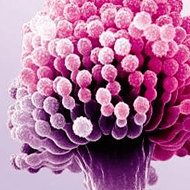The corrosion resistance properties of phosphoric acid coatings
Time:2025-04-14Phosphoric acid plays a pivotal role in surface treatment processes, particularly in enhancing the corrosion resistance of metal substrates. Through chemical conversion, phosphoric acid reacts with metal surfaces to form a protective phosphate coating. These coatings are widely used in automotive, construction, and manufacturing industries to prolong the service life of metals exposed to harsh environments.
Formation of Phosphate Coatings
Phosphoric acid coatings are typically produced through a process known as phosphating. In this process, metal parts—commonly steel, galvanized steel, or aluminum—are treated with a phosphoric acid solution containing dissolved phosphate salts. When the acid reacts with the metal surface, it triggers a localized reaction that dissolves some of the base metal, releasing hydrogen gas and creating insoluble phosphate crystals that bond tightly to the surface.
The general reaction can be summarized as: Metal + H₃PO₄ → Metal phosphate layer + H₂ (gas)
This crystalline phosphate layer serves as both a physical barrier and a primer for further protective coatings, such as paint or powder coating.
Corrosion Resistance Mechanism
Phosphoric acid coatings enhance corrosion resistance through several key mechanisms:
Barrier Protection: The phosphate layer acts as a shield, reducing direct exposure of the base metal to oxygen, moisture, and corrosive agents.
Improved Paint Adhesion: Phosphate coatings provide an ideal substrate for paints and other organic coatings. The improved adhesion minimizes the risk of underfilm corrosion, blistering, and delamination.
Uniform Surface Structure: The microcrystalline nature of the coating evens out surface irregularities, leading to a more uniform and controlled corrosion behavior.
Chemical Passivation: In some formulations, the phosphate layer can be further treated with chromates or other passivating agents to enhance corrosion resistance in more aggressive environments.
Types of Phosphate Coatings
Phosphoric acid-based coatings come in several forms depending on their application:
Zinc Phosphate: Common in automotive and industrial applications; offers excellent corrosion resistance and paint adhesion.
Iron Phosphate: More economical; used for general-purpose corrosion protection and as a paint base.
Manganese Phosphate: Known for wear resistance and used in applications involving friction, such as engine components.
Applications in Industry
Automotive Manufacturing: Phosphate coatings are applied to car bodies and parts before painting to prevent rust and improve paint durability.
Appliance and Electronics: Provides a corrosion-resistant base for appliances and electronic housings.
Defense and Aerospace: Used in high-performance systems to maintain structural integrity in extreme conditions.
Environmental and Safety Considerations
Although effective, traditional phosphate coating processes can generate sludge and waste containing heavy metals and phosphates. Newer formulations and closed-loop systems aim to reduce environmental impact while maintaining performance standards. Additionally, non-chromate post-treatments are increasingly being adopted to replace hexavalent chromium due to health and environmental concerns.
Conclusion
Phosphoric acid coatings are a proven, effective method for enhancing the corrosion resistance of metal surfaces. Their ability to form a tightly adhered, crystalline phosphate layer not only protects the substrate but also improves the performance of subsequent coatings. As industries continue to innovate, phosphoric acid-based coatings remain a cornerstone in corrosion protection strategies, balancing performance, cost-efficiency, and environmental responsibility.


 CN
CN





